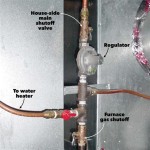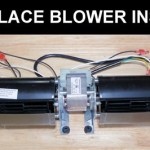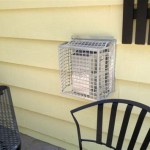Installing TV Over Fireplace: Wiring Considerations and Best Practices
Mounting a television above a fireplace has become a popular design choice in many homes. This configuration often maximizes space and creates a focal point in a living room. However, installing a TV over a fireplace involves careful planning, especially concerning the wiring and electrical connections. This article outlines the key considerations and best practices for managing the wiring when installing a television above a fireplace, ensuring a safe and aesthetically pleasing setup.
Understanding the Challenges
Installing a television above a fireplace presents several unique challenges compared to mounting a TV on a standard wall. Heat exposure from the fireplace is a primary concern. Electronic components are sensitive to high temperatures, and prolonged exposure can significantly reduce their lifespan and potentially create a fire hazard. Furthermore, the construction of the fireplace and chimney may present obstacles for running wires and concealing them effectively. Finally, adhering to electrical codes and safety regulations is paramount to prevent accidents and ensure the longevity of the installation.
Another hurdle involves the physical structure surrounding the fireplace. Fireplaces are often constructed with brick, stone, or concrete, making it difficult to drill and run wires. Moreover, the presence of a chimney flue directly behind the wall can further complicate the process. Careful planning and the right tools are essential to navigate these challenges effectively.
Aesthetic considerations also play a significant role. Exposed wires detract from the clean, modern look that homeowners typically desire when mounting a television above a fireplace. Hiding wires within the wall or using discreet cable management solutions is crucial to achieving a professional and visually appealing result.
Planning the Wiring Infrastructure
Before commencing any wiring work, a thorough assessment of the existing electrical infrastructure is necessary. This includes identifying the location of existing outlets, the capacity of the electrical circuits, and any potential obstructions within the wall. Creating a detailed plan that outlines the desired location of the television, the placement of power outlets, and the route for running wires is crucial for a successful installation.
Determining the power requirements of the television is the first step. Most televisions require a standard 120-volt AC power outlet. If an outlet is not already located behind the intended television mounting position, a new outlet must be installed. Consulting with a qualified electrician is recommended to ensure that the new outlet is properly wired and meets all applicable electrical codes.
In addition to power, connections for audio and video sources must also be considered. This typically includes HDMI cables for connecting cable boxes, Blu-ray players, and gaming consoles. Ethernet cables may also be required for smart TVs that rely on a wired internet connection. Planning for these connections in advance will prevent the need for unsightly exposed cables.
When planning the wiring route, prioritize safety and efficiency. Avoid running wires directly behind the fireplace where they may be exposed to excessive heat. Instead, consider routing wires through the wall to the side of the fireplace or above the mantel. Employing wire molding or cable conduits can further protect the wires and enhance the overall appearance of the installation.
Implementing Safe Wiring Practices
Safety should be the top priority when installing electrical wiring. Before starting any work, disconnect the power to the circuit breaker that supplies power to the area where the television will be mounted. This will prevent the risk of electric shock during the installation process. Confirm that the power is off by using a voltage tester.
Use appropriate wiring and connectors that are rated for the voltage and current requirements of the television and any associated devices. Employing high-quality HDMI cables is also essential for ensuring optimal audio and video performance. Cheap or poorly shielded cables can result in signal degradation and interference.
When running wires through the wall, be careful not to damage existing electrical wiring, plumbing, or other utilities. Use a stud finder to locate wall studs and avoid drilling into them. If you encounter any obstacles, consult with a qualified professional before proceeding.
Properly secure all wires to prevent them from becoming loose or creating a safety hazard. Use cable ties or wire staples to keep the wires neatly organized and out of the way. Ensure that all connections are tight and secure to prevent accidental disconnections.
When installing an electrical outlet behind the television, use a recessed outlet box to allow for a flush mount. This will prevent the television from protruding too far from the wall and enhance the overall aesthetic of the installation.
Adhere to all applicable electrical codes and safety regulations. These codes are designed to protect homeowners from electrical hazards and ensure the safe operation of electrical equipment. If you are unsure about any aspect of the installation, consult with a qualified electrician.
Heat Management and Mitigation
The heat generated by a fireplace can be detrimental to the lifespan and performance of a television. Prolonged exposure to high temperatures can cause electronic components to overheat, leading to premature failure and potentially creating a fire hazard. Therefore, implementing effective heat management strategies is crucial when installing a television above a fireplace.
The primary strategy for heat management is to minimize the television's exposure to direct heat from the fireplace. This can be achieved by mounting the television as far above the fireplace as possible. The further the television is from the heat source, the lower the temperature it will be exposed to.
Installing a mantel can also help to deflect heat away from the television. A mantel acts as a barrier, preventing hot air from rising directly towards the television. Choose a mantel that is wide enough to provide adequate heat protection.
Consider using a television mount that allows for tilting and swiveling. This will allow you to adjust the angle of the television to minimize its exposure to heat. It will also allow you to optimize the viewing angle for different seating positions in the room.
Ensure that there is adequate ventilation around the television. This will allow heat to dissipate more effectively, preventing it from building up inside the television. Avoid blocking any vents on the television or surrounding it with objects that could restrict airflow.
Monitor the temperature surrounding the television using a thermometer. This will help you to identify potential overheating issues and take corrective action before any damage occurs. If the temperature consistently exceeds the manufacturer's recommended operating range, consider moving the television to a cooler location or implementing additional heat management strategies.
Concealing Wires for a Clean Aesthetic
One of the key goals of installing a television above a fireplace is to create a clean, modern aesthetic. Exposed wires can detract from this aesthetic and make the installation look unprofessional. Therefore, concealing wires effectively is essential for achieving a visually appealing result.
There are several methods for concealing wires when installing a television above a fireplace. One of the most common methods is to run the wires through the wall. This involves drilling holes in the wall behind the television and behind the components that will be connected to the television.
Before drilling any holes, be sure to check for any existing electrical wiring, plumbing, or other utilities that may be hidden within the wall. Use a stud finder to locate wall studs and avoid drilling into them. If you are unsure about any aspect of the drilling process, consult with a qualified professional.
Once the holes have been drilled, the wires can be run through the wall. Use wire molding or cable conduits to protect the wires and keep them neatly organized. This will also make it easier to add or remove wires in the future.
Another method for concealing wires is to use a cable management system. These systems typically consist of plastic or metal channels that attach to the wall and conceal the wires. Cable management systems are available in a variety of sizes and colors to match your decor.
If you are unable to run the wires through the wall or use a cable management system, consider painting the wires the same color as the wall. This will help to camouflage the wires and make them less noticeable.
Regardless of the method you choose, be sure to properly secure all wires to prevent them from becoming loose or creating a safety hazard. Use cable ties or wire staples to keep the wires neatly organized and out of the way.
Professional Installation Considerations
While some homeowners may be comfortable tackling the installation of a television above a fireplace as a do-it-yourself project, it is often advisable to hire a professional installer. Professional installers have the experience, expertise, and tools necessary to ensure a safe and aesthetically pleasing installation.
Professional installers can assess the existing electrical infrastructure and determine the best way to run the wires. They can also identify any potential obstacles within the wall and develop a plan to overcome them.
Professional installers have access to specialized tools that make the installation process easier and more efficient. These tools include stud finders, wire fish tapes, and power drills.
Professional installers are familiar with all applicable electrical codes and safety regulations. They can ensure that the installation meets all requirements and is safe for use. They also offer liability insurance in case of damage to the home or equipment.
Professional installers can provide advice on the best type of television mount and cable management system to use. They can also help you choose the right size and type of television for your room.
Hiring a professional installer may cost more than doing the installation yourself, but it can save you time, effort, and potential headaches in the long run. It can also ensure that the installation is done safely and correctly, protecting your investment and your family.

Tv Wall Mount Installation With Wire Concealment Over Fireplace

How To Mount A Tv Over Brick Fireplace And Hide The Wires Designing Vibes Interior Design Diy Lifestyle

Tv Wall Mount Installation With Wire Concealment Over Fireplace

How To Hide Tv Wires Above A Fireplace When You Can T Go Through The Wall Homes I Have Made

Hiding Wires On Wall Mounted Tv Above Fireplace Extension Kit Powerbridge

How To Hide Tv Wires Above A Fireplace When You Can T Go Through The Wall Homes I Have Made

Hide Cords Of A Tv Mounted Over Fireplace Powerbridge

How To Hang A Tv Over Fireplace

How To Hide Cable Wires When Mounting Tv Over Fireplace Hometalk

How To Hide Tv Wires Above A Fireplace When You Can T Go Through The Wall Homes I Have Made








